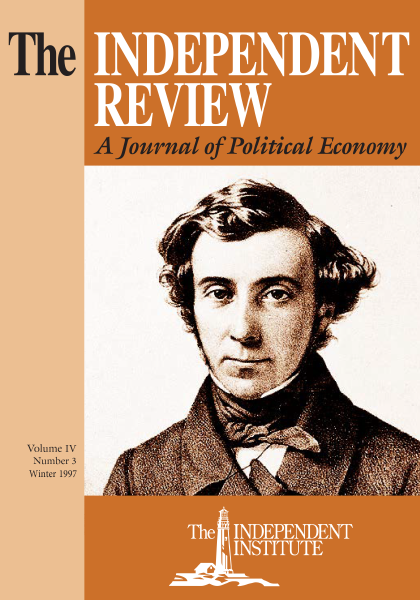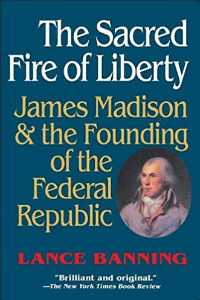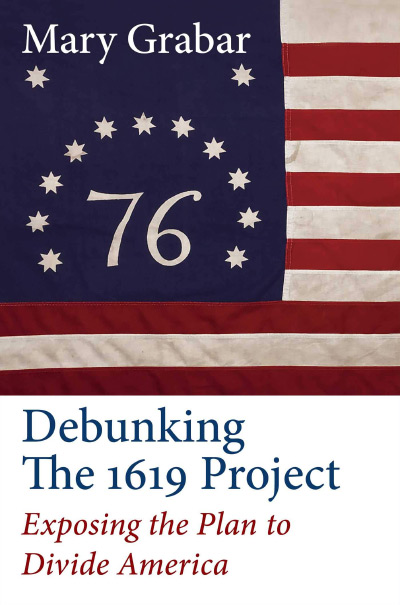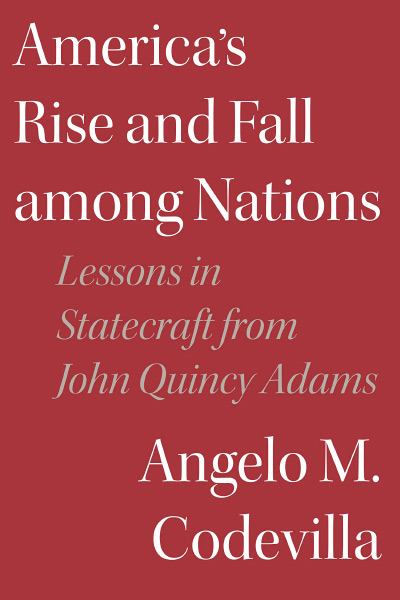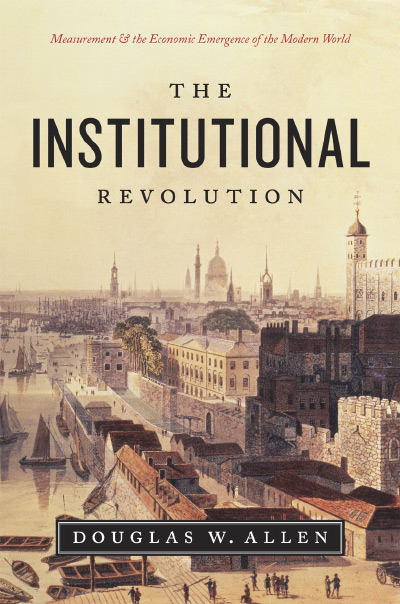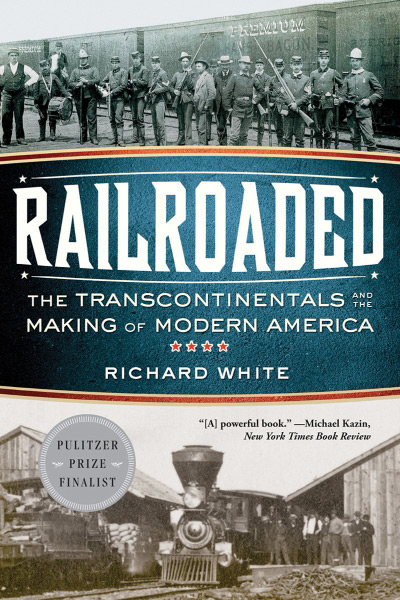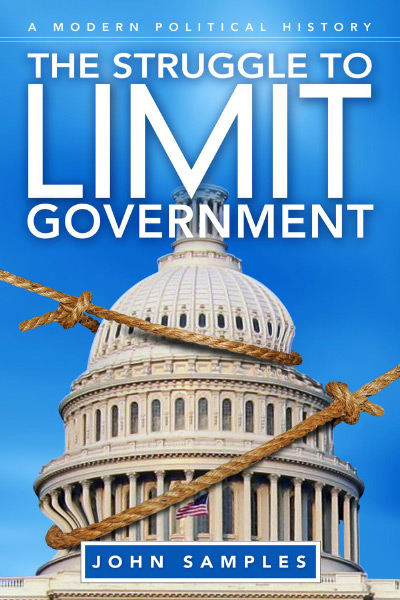In recent years some historical sociologists, critical of the tendency of Marxist and other forms of grand social theory to disregard empirical evidence, have urged a strategy of “bringing the state back in” to the study of politics. Their point, a methodological one, is that formal institutions of government really do exist and have a significant impact on the course of political events. Most constitutional and legal historians have not required instruction on this point, but the idea of “bringing the states back in” might serve as a useful description of recent developments in constitutional jurisprudence that reflect the exhaustion of nationalism as a creative intellectual and political force.
Lance Banning’s new book on the political and constitutional thought of James Madison in the American founding signals this intellectual development in historical scholarship. Banning shifts the focus of study from the “republicanism versus liberalism” problem that has preoccupied historians for a generation, to the older and more fundamental issue of centralization versus states’ rights. The direction of Banning’s work is particularly important in view of his reputation as a leading exponent of the “republican-ideology” interpretation of early American constitutionalism.
In a 1988 essay Banning distanced himself from republican ideological orthodoxy in arguing that republican virtue did not, in essence, mean “self-surrender,” but rather “vigorous assertions of the self within a context of communal consciousness and a willingness to live by the community’s decisions” (“Some Second Thoughts on Virtue and the Course of Revolutionary Thinking,” in Conceptual Change and the Constitution, edited by Terence Ball and J.G.A. Pocock. Lawrence: University Press of Kansas, 1988, p. 200). Banning stated that the fundamental premise of a properly balanced republican constitutionalism was the existence of self-interested individuals and groups.
Banning’s study of Madison presents the results of a fresh examination of the sources based on a deeper understanding of what is now generally recognized as the liberal republican political philosophy of the American Revolution. Revolutionary principles, Banning writes, “always meant both firm securities for private rights and the perpetuation of a form of government that derived entirely from, and remained responsive to, the body of an equal people” (p. 213). Madison, acknowledged in recent scholarship as the most penetrating and representative political thinker among the authors of the Constitution, did not shift from classical republicanism to liberalism in the constitution-making phase of the Revolution, as has been thought. He was a liberal in subscribing to the social contract theory of the origins of government and the idea that the end of government is to protect the liberty and property rights of individuals. He was a republican in holding to the “neoclassical,” seventeenth-century English commonwealth idea that for the preservation of public liberty “a certain virtue in the people” was still necessary (p. 218).
Having worked his way out of the conundrum of republicanism versus liberalism, Banning finds himself back in the states’ rights versus consolidation dilemma. Maintaining an open mind on this issue, which has long been thought laid to rest by New Deal nationalism and centralization, he presents a unified interpretation of Madison as a federalist-minded revolutionary and constitutionalist. On its face this may not seem to be saying much; the concept of federalism has acquired such a protean meaning that it can be used, as in Samuel Beer’s recent To Make a Nation: The Rediscovery of American Federalism (Cambridge, Mass.: Belknap Press, 1993), to justify a virtually unitary state. In Banning’s view, however, federalism has a real and irreducible states’-rights dimension.
Banning questions the now-standard interpretation of Madison as a proponent of radical nationalist constitutional reform in the 1780s, who under the pressure of partisan politics in the 1790s experienced a states’-rights conversion. Reflecting the methodological, not to say philosophical, dissatisfaction with historicism that immersion in the documentary sources often produces, Banning complains that the “Madison who speaks to us today through modern secondary studies is in largest part a creature of our own interpretive conventions” (p. 368). He enjoins, “Let us hear from Madison himself and not from some theatrical concoction of our own political debates or of our current, doubtless fleeting scholarly conventions” (p. 368). The proper task of the historian, Banning submits, is to understand Madison as he understood himself. And to do this it is necessary, above all, to acknowledge the extent to which state sovereignty and states’ rights were foundational to his thinking.
In the historiographical commentary that forms a subtext of this strongly argued and deeply personal book, Banning is at pains to refute the charge, bluntly issued by progressive historians in the early twentieth century and more subtly by proponents of the republican ideological school, that in pursuing constitutional reform in the mid-1780s Madison lost faith in the democratic promise of the Revolution. While not denying Madison’s fear of popular abuses, he insists that Madison never so much as hinted at a counterrevolutionary attitude, as some Federalists did. Throughout the entire revolutionary era, he argues, Madison’s thinking was of a piece: he never doubted that liberty defined as security of individual liberty and property rights was inseparable from liberty defined as popular self-government under the rule of the majority.
In post-World War II historiography on the Revolution, the critique of progressive history took the form of an interpretation emphasizing the emergence of nationalism as an organizing principle of American politics and its institutionalization in appropriate constitutional forms. Banning’s answer to progressive and neoprogressive history takes a different tack. In the broader perspective of constitutional history, his main point is that in order to properly understand the design and intent of the American Constitution, it is essential to grasp the “confederal dimensions” of Madison’s thought.
Banning analyzes Madison’s concept of federalism by focusing on his continuing attempt, throughout the revolutionary and Constitution-making era, to define “the practicable sphere” of a republic. Madison constantly searched for “the middle ground” between destructive localism and equally destructive consolidation (p. 211). No formula of constitutional language or legal rule could establish, once and for all, the point of equilibrium between the powers of the states severally and the powers of the states as united in the federal government. In a sense, of course, the quest for the proper point of equilibrium between the governments of America was instrumental and expedient. The reason for seeking the middle ground, the ultimate end, was to sustain healthy republican politics. Governments at both levels, even under the Articles of Confederation, were required, and in some sense were authorized, to secure liberty and justice. The rule of prudence, therefore, must guide decisions concerning the right balance between the states and the general government, whatever institutional form the government of the Union might assume.
But the search for the middle ground or the practicable sphere of a republic must also, it appears, be regarded as an end in itself and an intrinsic good. When we respond to the imperative of justice, as the English writer Christopher Hollis long ago observed in a perceptive study of American politics, it is easy to assume a universal outlook and believe that everything is everybody’s business. A logical case could be made for a world state dedicated to justice that would permit no eccentricity of conduct or freedom of opinion. The chief and admirable argument for dividing the world into states, Hollis suggested, was that the application of such logic would in practice be intolerable (The American Heresy. New York: Minton, Balch, 1930, p. 141). In America, as John Dickinson said at the Constitutional Convention, the “division of this Country into distinct States” may have been an “accidental and lucky” occurrence. But it turned out to be a remedy for the diseases that throughout history afflicted republican government, and must therefore be maintained on principle.
According to Banning, Madison consistently adhered to this understanding of the constitution of the American polity, even—or perhaps especially—when he sought to strengthen the general government in 1787. It was Madison’s conviction that the practicable limits of a republic could be extended on a continental scale only by relying on the partly federal features that any constitutional regime in America must have. That is to say, a republican government for the nation as a whole, as projected in the Constitution of 1787, could not be a republican government simply. The vote for the Connecticut compromise in July 1787 signified that in order to agree on a constitution it was necessary to bring the confederal state back in, at the expense of unity and power signaling consolidated government in the name of a putative national popular sovereignty.
Banning is critical of the emphasis that has been placed on the extended republic-pluralist interpretation of Madisonian constitutionalism. The Federalist no. 10 is not the sum and substance of Madison’s political thought, he contends, and to treat it as though it were obscures the limited responsibilities the framers regarded as the proper field for federal action. Not only is preoccupation with the argument for the superiority of large republics unhistorical, but it also “seems to have no limits.” “Its logic seems to march unswervingly to the conclusion that almost all decision-making should be concentrated at the national level” (p. 208). Banning concedes that in his desire to prevent attacks on private property in the states, Madison believed there were few if any limits to the advantage of a large republic. But the desire to prevent injustice in this respect, although important, was not Madison’s paramount concern. The principal task Madison set for himself as a revolutionary statesman and thinker was to find the middle ground between the responsibilities of republican self-government at the local level and at the level of the federal government.
More than was apparent when it was first advanced, the republican-ideological interpretation of the Revolution shared the assumption of progressive historiography that the Constitution was a conservative reaction to democratic excesses in the states, signifying repudiation of the principles of the Declaration of Independence. Banning breaks from this intellectual tradition. He writes: “sometimes, we might say, a crisis of the Union is exactly that—intrinsically and fundamentally political and governmental in its nature, not simply a reflection of an underlying argument between competing social groups” (p. 369).
It is not a criticism of Banning to say that his account does not explain how to distinguish a crisis of the Union that is intrinsically political from one that is not. To employ this mode of analysis, however, strikes a decidedly new note in studies of the Revolution and the Constitution. It is comparable in significance to the rediscovery of an autonomous role for the states in constitutional jurisprudence. Banning’s splendid achievement prepares the way for further study of the nature of the Union, an issue that dissatisfaction with the sovereign nation-state in the United States and elsewhere in the late twentieth century makes especially timely.
| Other Independent Review articles by Herman Belz | |
| Spring 2005 | The Constitution of Empire: Territorial Expansion and American Legal History |
| Spring 2003 | Reassessing the Presidency: The Rise of the Executive State and the Decline of Freedom |

